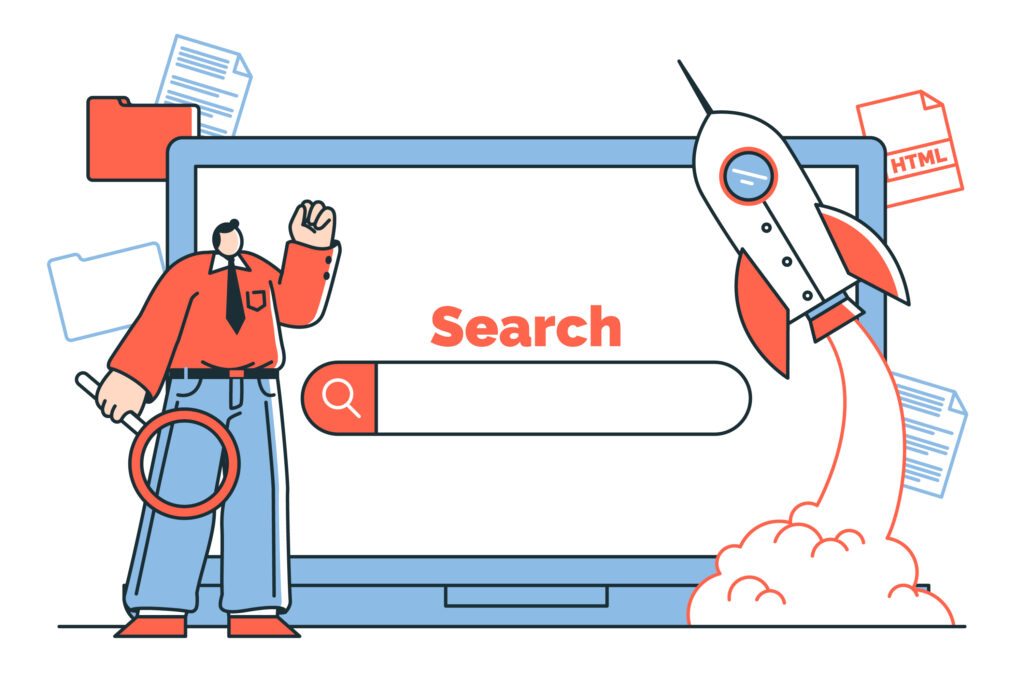If you want your agency website to rank higher on search engines, on-page SEO is your starting point. This involves optimizing the content and structure of your web pages so they perform well in search results. Without solid on-page SEO, your chances of attracting traffic can take a hit. In this guide, we will break down everything you need to know about improving your site’s performance step by step.
What Is On-Page SEO and Why Is It Important?
On-page SEO refers to the techniques used to optimize individual web pages to rank better in search engine results. It focuses on factors you can control on your website, such as content, headings, and meta descriptions.
Search engines like Google analyze your on-page elements to decide where your site should appear in search rankings. For agencies, getting this right means more visibility, better engagement, and more opportunities to connect with potential clients.
The Foundation of On-Page SEO
Strong on-page SEO starts with getting the basics right. Before diving into advanced strategies, ensure the foundation of your website is solid.
1. Keyword Research
The first step is identifying the right keywords your audience uses. Tools like Google Keyword Planner or AnswerThePublic can help you find high-traffic keywords related to your services. Focus on one primary keyword (like on-page SEO) for each page and include related terms naturally throughout your content.
2. High-Quality Content
Search engines value pages that provide meaningful, in-depth answers to users’ questions. Write content that is relevant, well-structured, and free of unnecessary fluff. Use headers and bullet points to organize your information.
3. Proper URL Structure
Your URLs should be clean and include your primary keyword. For example:
www.agencyname.com/on-page-seo-tips
Crafting Engaging Content with SEO in Mind: On-Page SEO
Creating content that satisfies both users and search engines is the backbone of on-page SEO. Follow these principles:
1. Use Headers Effectively
Headers (H1, H2, H3) break up your content and make it easier to read. They also tell search engines what each section of your page is about. Always include y our focus keyphrase in some of these headers.
our focus keyphrase in some of these headers.
2. Write for Your Audience
Your content should address the needs of your target audience. Keep the language simple but engaging. Avoid technical jargon unless necessary, and always explain concepts clearly.
3. Include Visual Elements
Images, videos, and infographics can keep visitors on your page longer. Use descriptive filenames and alt text that include keywords to help these visuals contribute to your SEO efforts.
Technical On-Page SEO Factors You Cannot Ignore
Beyond content, there are technical aspects that impact how search engines evaluate your site.
1. Mobile-Friendliness
Search engines prioritize mobile-friendly websites. Test your site’s responsiveness on different devices to ensure a smooth experience for all users.
2. Page Speed
Slow-loading pages can drive visitors away. Use tools like Google PageSpeed Insights to identify areas that need improvement. Compress images and minimize unnecessary scripts to enhance loading times.
3. Internal Linking
Linking to other pages within your website helps users navigate and lets search engines understand your site structure. Use descriptive anchor text and link to relevant pages whenever possible.
The Role of Metadata in On-Page SEO
Metadata refers to the behind-the-scenes details that summarize your page for search engines. Optimized metadata can encourage users to click on your site.
1. Title Tags
This is the clickable headline that appears in search results. Keep it under 60 characters, include your primary keyword, and make it descriptive.
2. Meta Descriptions
Your meta description provides a brief overview of your page’s content. Limit it to 160 characters and include your keyphrase for better visibility.
Optimizing Images for SEO
Images are an essential part of on-page SEO, but they need to be optimized correctly to make an impact.
1. File Size Matters
Large image files can slow down your page. Compress images before uploading them to your site.
2. Use Descriptive Alt Text
Alt text helps visually impaired users and improves your site’s accessibility. Always include keywords in your alt text when describing images.
3. Choose Relevant Formats
Stick to widely supported formats like JPEG or PNG for better compatibility and performance.

Schema Markup: A Secret SEO Weapon
Schema markup adds extra details to your pages, making it easier for search engines to understand your content. It can highlight things like reviews, contact details, and service offerings directly in search results.
How to Implement Schema
- Use tools like Google’s Structured Data Markup Helper.
- Test your schema using the Rich Results Test tool.
The Impact of User Experience on On-Page SEO
Search engines reward websites that provide a positive user experience. On-page SEO and user experience go hand in hand.
1. Easy Navigation
Your site should have a clear menu and logical structure. Visitors should be able to find what they are looking for quickly.
2. Readable Font Sizes
Use fonts that are easy to read and maintain consistent spacing between lines.
3. Reduce Pop-ups
Intrusive pop-ups can frustrate users and harm your SEO rankings. If you need pop-ups, make sure they are easy to close.
Track Your Progress with Analytics: On-Page SEO
Measuring the effectiveness of your on-page SEO efforts is vital. Use tools like Google Analytics and Search Console to monitor your site’s performance.
Key Metrics to Watch
- Bounce Rate: How quickly visitors leave your site.
- Session Duration: How long visitors spend on your site.
- Click-Through Rate: The percentage of users who click your link in search results.

Common Mistakes to Avoid in On-Page SEO
Many agency websites fail to succeed due to common on-page SEO mistakes.
1. Keyword Stuffing
Overusing keywords can harm your rankings. Focus on natural placement instead.
2. Ignoring Mobile Users
If your site is not mobile-friendly, you will lose a significant chunk of your audience.
3. Neglecting Content Updates: On-Page SEO
Regularly updating your site shows search engines that your content is fresh and relevant.
Why On-Page SEO Is a Continuous Process
On-page SEO is not something you set and forget. Search engine algorithms change, and your competitors are always updating their sites. Staying consistent with audits, updates, and performance reviews will keep your site in good shape.
Conclusion: On-Page SEO
On-page SEO is the backbone of any successful agency website. By focusing on quality content, technical factors, and user experience, you can improve your site’s rankings and connect with more potential clients. Remember, small, consistent efforts over time will yield the best results.







